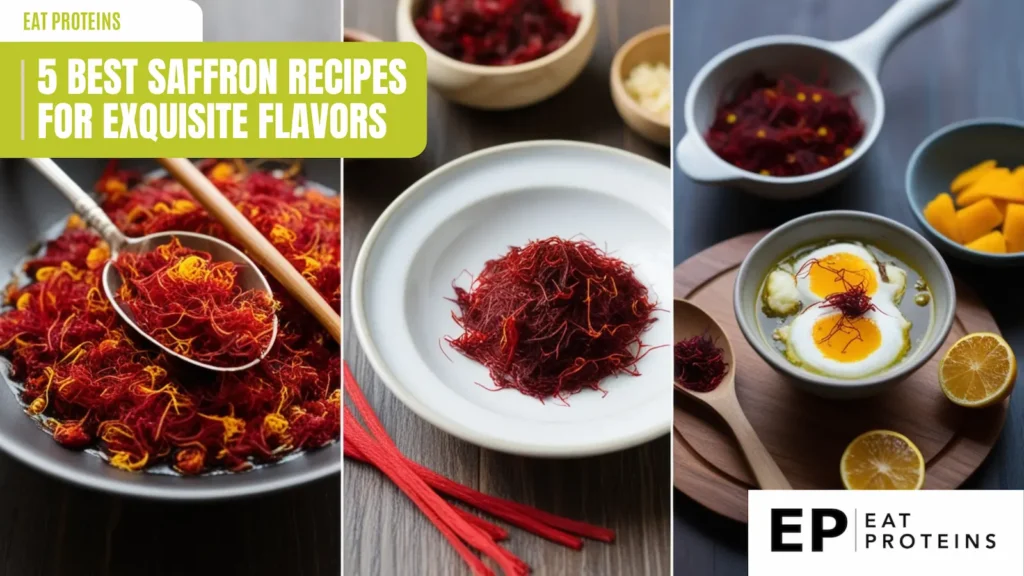
Saffron is one of the most prized spices in the world, known for its unique flavor and vibrant color. I find it fascinating how it can elevate everyday dishes to something special. In this article, I will share my top five saffron recipes that combine tradition and taste, showcasing the versatility of this amazing ingredient.
Using saffron can enhance both sweet and savory dishes, making it a valuable addition to any kitchen. I believe that cooking with saffron opens up a world of culinary possibilities, allowing me to explore flavors from different cultures. These recipes not only highlight saffron’s beauty but also make it easy to incorporate into various meals.
1. Saffron Risotto
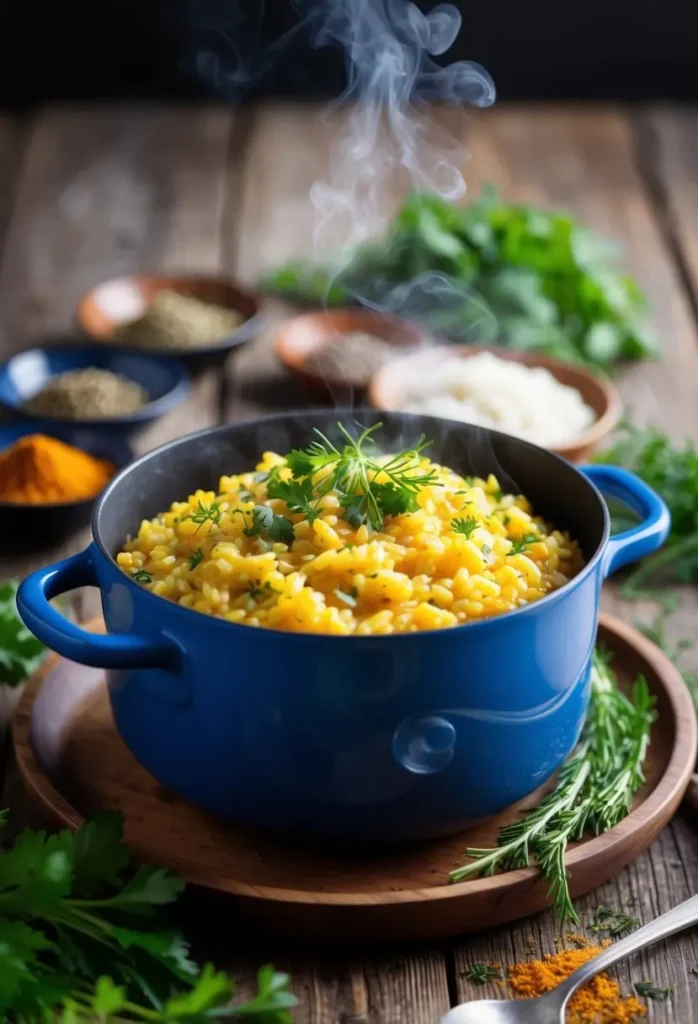
Saffron risotto is a creamy Italian dish that combines Arborio rice with rich flavors of saffron. The saffron adds a golden color and a unique taste.
I find it easy to make, even for a beginner. The steps are simple and require a few ingredients.
First, I heat 4 cups of broth in a saucepan. In a separate pan, I melt 2 tablespoons of butter and add 1 chopped onion. After cooking the onion until soft, I add 1 cup of Arborio rice and stir for 1-2 minutes.
Next, I pour in half a cup of white wine and let it simmer until absorbed. Then, I add the warmed broth one ladle at a time, stirring constantly until it is absorbed. This takes about 18-20 minutes.
During the last few minutes, I add a pinch of saffron threads soaked in a little warm water. I finish it off with 1/2 cup of grated Parmesan cheese for extra flavor.
This saffron risotto is a delightful treat that pairs well with seafood or chicken.
2. Persian Saffron Rice (Tahchin)
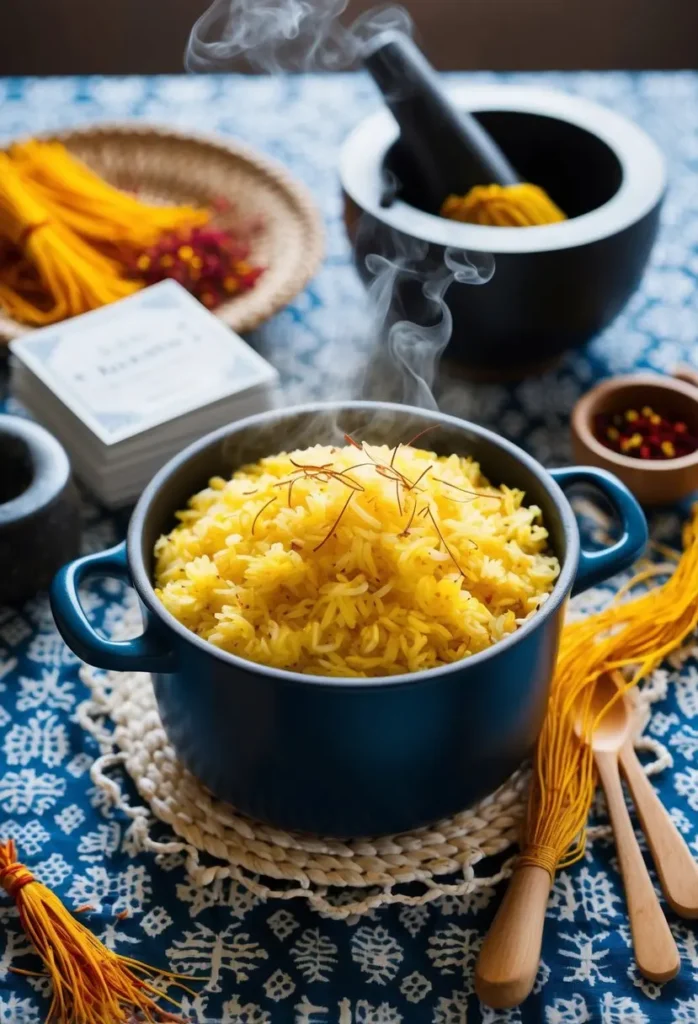
Persian Saffron Rice, known as Tahchin, is a traditional dish made with rice, yogurt, and saffron. It has a deliciously unique flavor and a striking appearance. Tahchin is easy to make and rewarding to serve.
To prepare Tahchin, I follow these steps:
- Wash and Soak Rice: I rinse 2 cups of basmati rice until the water runs clear. Then, I soak it in salted water for 5 to 15 hours.
- Prepare Yogurt Mixture: In a bowl, I mix 1 cup of plain yogurt, 1/4 cup of melted butter, 1/4 teaspoon of saffron threads (dissolved in 2 tablespoons of warm water), and salt to taste.
- Cook Rice: I boil water in a pot, add the soaked rice, and cook until slightly tender, about 5 to 7 minutes. Then, I drain it.
- Layer and Bake: In a greased oven-safe dish, I layer half the rice, spread the yogurt mixture, and top with the remaining rice. I cover it tightly and bake at 350°F (175°C) for about 1 hour.
- Serve: Once baked, I let it cool for a few minutes. Then, I invert the dish to reveal the golden crust on top, ready to enjoy.
3. Saffron Ice Cream (Bastani Sonnati)
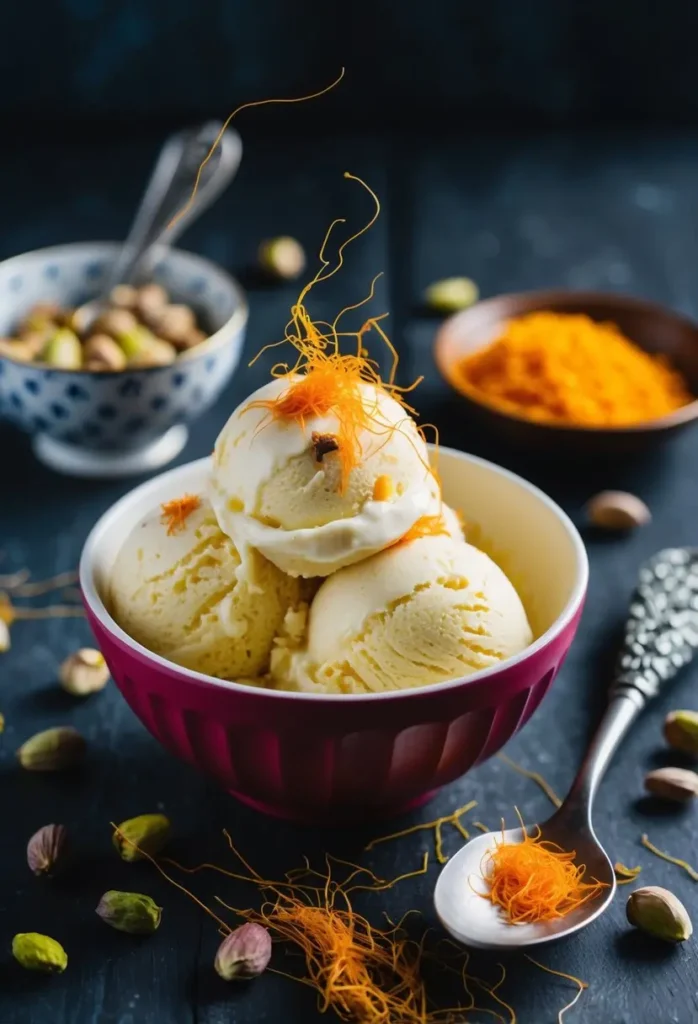
Saffron ice cream, also known as Bastani Sonnati, is a traditional Persian dessert. It has a rich, creamy texture and a unique flavor from saffron. This ice cream often incorporates rose water, pistachios, and golden strands of saffron, giving it a distinct taste.
Making Bastani Sonnati is not overly complicated. I find it enjoyable to prepare, and it usually takes about 30 minutes of active time, plus freezing overnight.
Here are the steps to make it:
- Ingredients: Gather 2 cups of heavy cream, 1 cup of whole milk, 3/4 cup of sugar, 1/2 teaspoon of saffron threads, 1 tablespoon of rose water, and 1/4 cup of crushed pistachios.
- Prepare Saffron: In a small bowl, soak the saffron threads in 2 tablespoons of warm milk for about 10 minutes.
- Mix Ingredients: In a mixing bowl, combine the heavy cream, whole milk, sugar, rose water, and the saffron mixture. Stir well until the sugar dissolves.
- Chill and Freeze: Pour the mixture into an ice cream maker, following the manufacturer’s instructions. Once it thickens, stir in the crushed pistachios.
- Freeze: Transfer the ice cream to a container and freeze for at least 4 hours before serving.
Enjoy this delightful Persian dessert!
4. Saffron Chicken Kebabs
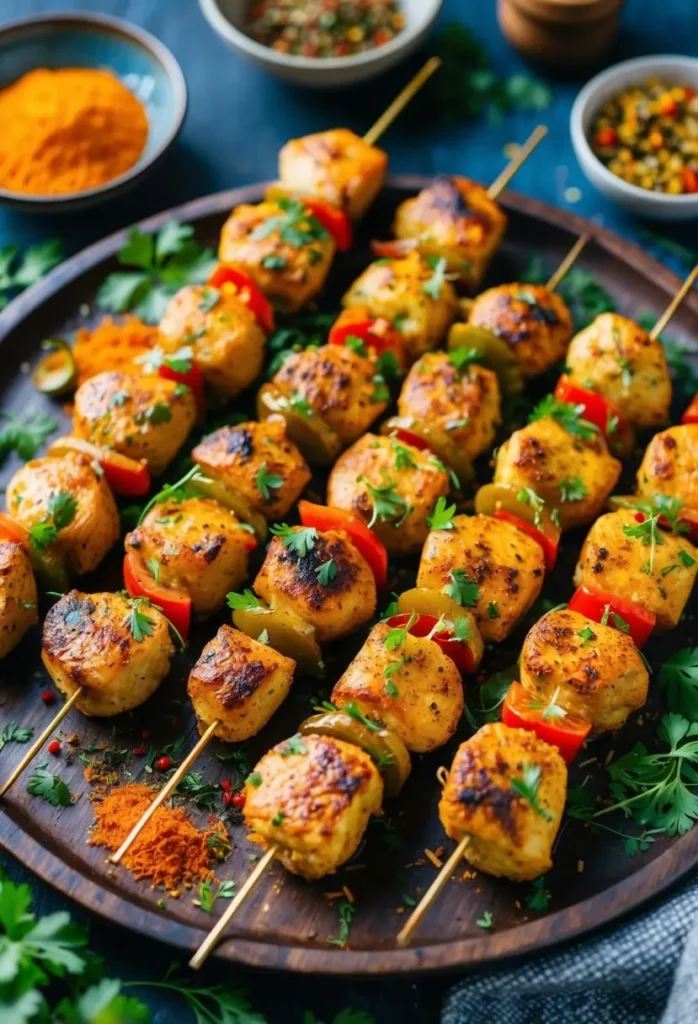
Saffron chicken kebabs are a flavorful dish that combines the rich taste of saffron with tender chicken. This dish is easy to make and perfect for grilling.
To prepare the kebabs, I start with boneless chicken pieces. I marinate them in a mix of yogurt, lemon juice, garlic, and saffron threads. Saffron adds a unique aroma and bright color to the chicken.
The process is simple. First, I soak the saffron in warm water for 10 minutes to release its flavor. Next, I mix it into the marinade along with the other ingredients.
After marinating the chicken for at least an hour, I thread the pieces onto skewers. I preheat the grill to medium-high heat. I cook the kebabs for about 5-7 minutes on each side until they are fully cooked and have nice grill marks.
These saffron chicken kebabs can be served with a side of rice or a fresh salad. They are great for a summer barbecue or a family dinner. Enjoying this dish is a great way to experience the vibrant taste of saffron.
5. Saffron Paella
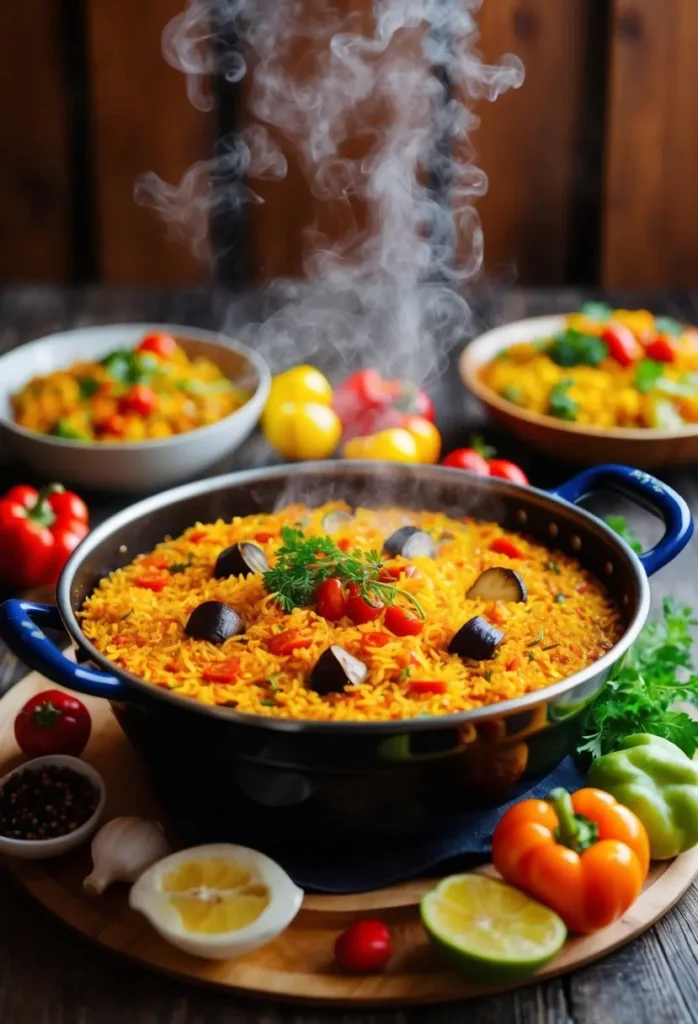
Saffron paella is a classic Spanish dish known for its vibrant color and rich flavor. I find this recipe to be not only delicious but also fairly easy to prepare.
To make saffron paella, I follow these main steps. First, I gather my ingredients: 2 cups of rice, 1 onion, 2 tomatoes, 4 cups of chicken or vegetable broth, and a pinch of saffron threads.
Next, I sauté the chopped onion in olive oil until soft. Then, I add in the diced tomatoes and cook for a few minutes. I stir in the rice and let it toast for a bit.
After that, I pour in the broth along with the saffron, stirring well. I bring the mixture to a boil and then reduce the heat. I let it simmer for about 20 minutes without stirring.
Finally, I let the paella sit for 5 minutes off the heat before serving. This allows the flavors to meld together beautifully. Saffron paella is a dish that brings a taste of Spain right to my kitchen.
What Are the Health Benefits of Saffron?
Saffron is not just a beautiful spice; it also offers several health benefits that can enhance overall well-being. I will discuss its nutritional profile, antioxidant properties, and potential anti-depressant effects.
What Is the Nutritional Profile of Saffron?
Saffron is a low-calorie spice rich in essential nutrients. Each teaspoon contains about 5 calories. It provides vitamins such as vitamin C, B vitamins, and minerals like potassium, magnesium, and manganese.
These nutrients play important roles in bodily functions. For example, vitamin C boosts the immune system, while potassium helps regulate blood pressure. Additionally, saffron contains crocin, which is linked to various health benefits, from improving vision to enhancing mood.
How Do the Antioxidant Properties of Saffron Benefit Health?
One of the most valuable aspects of saffron is its high antioxidant content. Antioxidants are crucial for combating oxidative stress in the body. Saffron contains powerful antioxidants like crocin, safranal, and picrocrocin.
These compounds help protect cells from damage caused by free radicals. Regular consumption of saffron may contribute to better heart health and reduced inflammation. I find it fascinating how a small amount of this spice can have significant effects on overall health.
What Are the Potential Anti-Depressant Effects of Saffron?
Research suggests that saffron may have anti-depressant effects. Studies indicate that it can help improve mood and reduce symptoms of depression. Crocin and safranal are thought to influence serotonin levels in the brain.
Some clinical trials have shown that saffron can be as effective as certain medications for treating mild to moderate depression. This makes saffron a valuable addition to a balanced diet for mental well-being.
What Are Some Cooking Tips for Using Saffron?
To make the most of saffron in your cooking, it’s important to focus on proper storage, soaking techniques, and how to balance its unique flavor. These steps will enhance the quality of your dishes and ensure that the spice shines.
How to Store Saffron Properly?
I always store saffron in a cool, dark place to maintain its flavor and aroma. Using an airtight container is essential. Glass jars are my go-to choice as they don’t impart any additional flavors.
Make sure to keep the container away from sunlight and moisture. Heat can also degrade saffron’s quality, so avoid places like kitchen cabinets near the stove. Storing saffron in these conditions helps preserve its potency for up to two years.
What Is the Optimal Soaking Time for Saffron?
Soaking saffron is key to releasing its rich color and flavor. I recommend soaking saffron threads in warm water, broth, or milk. This step can significantly improve the flavor of my dishes.
Typically, I let the threads soak for about 10 to 15 minutes. If I’m using a powdered form, just a few minutes can suffice. The longer soaking time allows for more robust flavor extraction, but I avoid soaking for too long as it can lead to loss of aroma.
How to Balance Flavors When Cooking with Saffron?
When using saffron, I think about how to balance its distinct taste with other ingredients. This spice has a unique flavor that can easily overpower a dish if used in excess.
I usually add saffron toward the end of the cooking process to maintain its integrity. It pairs well with ingredients like rice, seafood, and certain vegetables. I often use it alongside herbs like parsley or spices like cumin to create a harmonious blend of flavors.
Keeping these tips in mind can help me elevate my saffron dishes to the next level.
